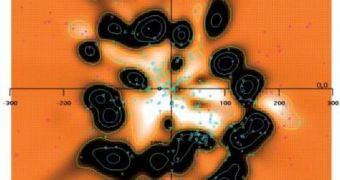Despite numerous surveys and investigations of the area around the Sun containing interstellar gas, the full picture of what precisely goes on inside that region has yet to surface. Previous researches imaged the area in various wavelengths, and scientists have been working on putting all the data together for a long time. Now, an international collaboration of astronomers publishes a new set of 3D maps of the region, which is located about 300 parsecs (980 light-years) around the Sun. The group includes researchers from the United States and France.
In a paper published in the latest issue of the respected journal Astronomy & Astrophysics, the team provides a new tool for assessing the level of absorption by the interstellar gas in the area around our star. This medium has been largely studied in two absorption lines, namely calcium (CaII) K (at 3,933 angstroms) and the sodium doublet (at 5,889 and 5,895 angstroms).Over the years, researchers have demonstrated that the two lines are actually complementary, in the sense that the K one is sensitive to partially ionized gas, whereas the doublet traces cold and neutral interstellar gas.
About 1,857 stars were analyzed for the new investigation. The rates of absorption in the gas were analyzed for each individual study member, mostly via the telescopes put at the researchers' disposal by the European Southern Observatory (ESO), in Chile. The astronomers also combined the new data with already-published conclusions for the new paper, and the result is essentially a catalog of absorption rates for all these stars. The group also discovered an area around the Sun where the density of gas was very low. This region was named the Local Cavity, and is indicated in the new image by the white stains.
What the new investigation brings to the table in terms of previously unknown data is a map of the calcium lines. The study has revealed a honeycomb-like pattern of filamentary, ionized gas structures, which appear to be permeating the region. Inside the honeycomb are small cells of interstellar gas, the researchers report. Theories on this issue predicted the existence of rarefied cavities in the interstellar medium. The studies showed that these structures must have formed under the combined action of energetic supernova events and the outflowing winds of clusters of hot and young stars.

 14 DAY TRIAL //
14 DAY TRIAL //